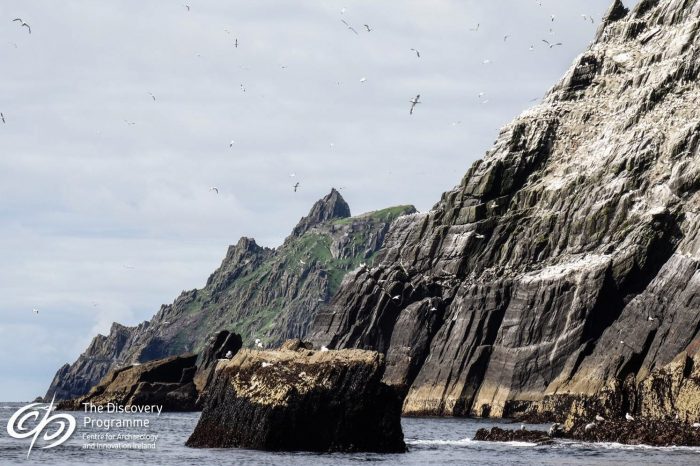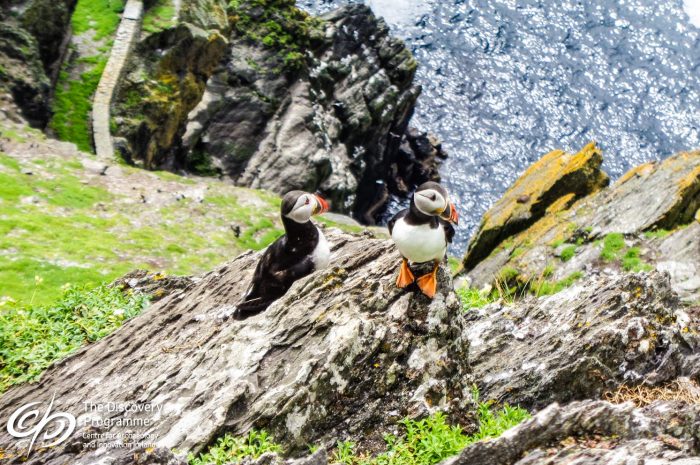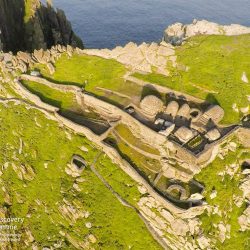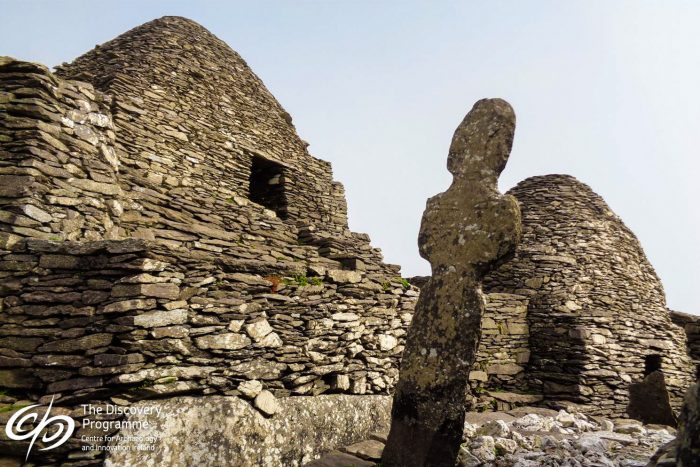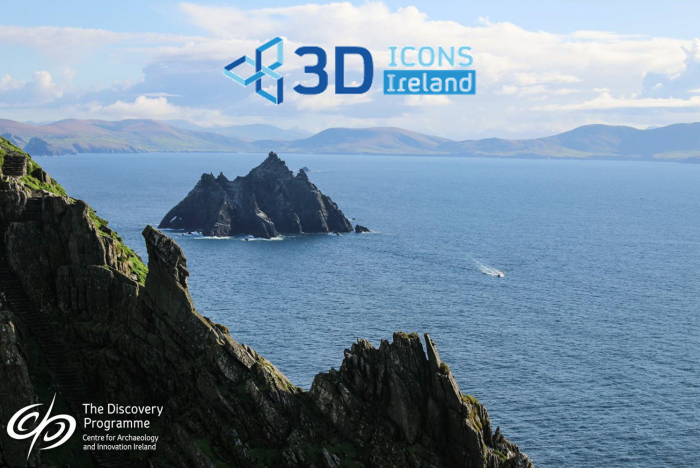Skellig Michael
 Add to favorites
Add to favorites
Founded between the 6th and 8th centuries
Foundation traditionally attributed to St Fionán
Also known as: Great Skellig; The Rock of St Michael; Sceilig Mhichíl; Sgeillic; Inis-scgellge
Two rocky crags rise out of the Atlantic Ocean a dozen kilometres off the coast of County Kerry. Skellig Michael or ‘The Rock of St Michael’, the larger of the two Skellig Rocks is the most spectacularly situated of all the early medieval island monastic sites, with a well-preserved monastery and remote hermitage. The pinnacle consists of two Old Red Sandstone peaks with a valley between them. The south peak is 218m high and was used a hermitage, with the 183m high lower peak containing the main monastic site. The valley between the two peaks is known as Christ’s Saddle. The island’s isolation has helped to preserve and protect the monastic remains.
Little Skellig, the second and smaller island, was not colonized. It is now the second largest colony of gannets in the world, home to over 70,000 of Ireland’s largest sea bird.
The Skelligs are home to many different types of wildlife in addition to the gannets, with arctic terns, fulmars, cormorants and puffins all calling the islands home.
The Monastery on Skellig Michael consists of an inner stone enclosure with two oratories, a mortared church, seven cells and the remains of water cisterns, a cemetery, leachta (possible cult shrines or pilgrim stations), crosses and cross-slabs. It also includes two large terraces referred to as the Upper and Lower Monks’ Gardens. High retaining walls support all the terracing, on which everything is constructed.
On ledges on the South Peak of the island rock-cut steps lead up to the Hermitage. It comprises a series of platforms, traverses, enclosures and terraces. The Oratory Terrace still retains its original features: an oratory, altar, leacht, bench, cisterns and a possible shrine. The oratory is an inverted-boat shaped structure, with the door in the west wall.
There is a small, rectangular window in the east wall. Cell A is the largest of the monastic cells and clearly had a communal function. It is particularly imposing and has very thick walls built of small flat stones. The door has a double lintel and the floor retains most of its original paving. Two cupboards and projecting stone pegs were probably used for storage purposes. There are window openings, one of which focuses on the South Peak and another on the Little Skellig.
St Michael’s Church lies to the west of the Large Oratory and is on the same level. The church is rectangular in plan, unlike the inverted-boat-shaped oratories, and has straight walls and sharp rectangular corners. It would have had a timber roof structure. There is an east window and a doorway on the north side. There is evidence of two distinct stages of construction: an earlier, smaller, mortared church was at some later date expanded, incorporating the smaller church.
Skellig Michael was an organised monastic settlement and a retreat for senior religious from mainland communities. Although attacked by the Vikings in the 8th century it continued to function as a monastery and pilgrim site well into the medieval period.
What happened here?
6th century: St Fionán is reputed to have founded a monastery on Skellig Michael.
821: Skellig was plundered by vikings. They took Étgal, abbot of Skellig, into captivity, where he later died in 824 from hunger.
860: The abbey on Skellig was reedified (rebuilt, likely after the viking attack).
882: The abbot of Skellig, Flannmac Cellach died.
950: Blaithmhac of Sgeillic (Skellig) died.
1044: Aed Scelic, a ‘noble priest’ of Skellig died.
11th and 12th centuries: The mortared church dates to this period.
12th century: A priory was founded at Ballinskelligs on the coast of the Iveragh Peninsula by Augustinian canons, which was closely associated to Skellig Michael. The canons would have continued to use the island monastery, likely seasonally, and would have received money from pilgrims to the island up until the dissolution of the priory in 1578.
Mid 12th century: The Augustinian Canons actively promoted more established sites of pilgrimage, such as Skellig Michael and Glendalough.
Late 12th century: Gerald of Wales reported that the monks left Skellig due to the hazardous position of the rock.
Skellig Michael was used by hermits during the medieval period, with the old buildings kept in good repair.
Mid-18th century: Skellig Michael was a much noted place of pilgrimage.
1820: Skellig Michael was taken over by the Corporation for Preserving and Improving the Port of Dublin (later the Commissioners of Irish Lights) purchased the island and erected two lighthouses on the Atlantic side of the rock.
1996: UNESCO inscribed Skellig Michael onto the list of World Heritage Sites, “on the basis of cultural criteria and considering that the site is of outstanding universal value being an exceptional, and in many respects unique example of an early religious settlement deliberately sited on a pyramidal rock in the ocean, preserved because of a remarkable environment. It illustrates, as no other site can, the extremes of a Christian monasticism characterizing much of North Africa, the Near East and Europe.” (http://whc.unesco.org/en/list/757)
2014: Skellig Michael was chosen as a shooting location for Star Wars: The Force Awakens, and further films.
A short behind the scenes look at why Skellig Michael was chosen by JJ Abrams for the new Star Wars films













































